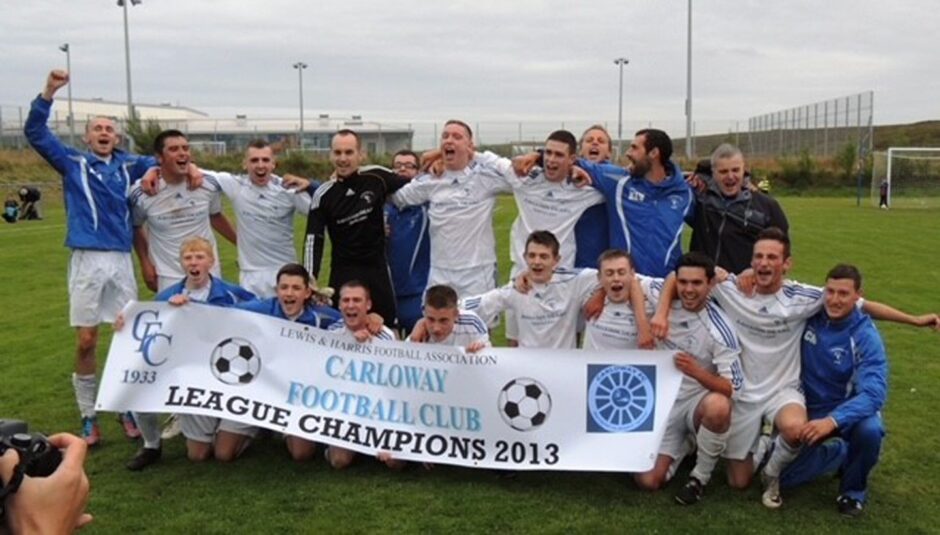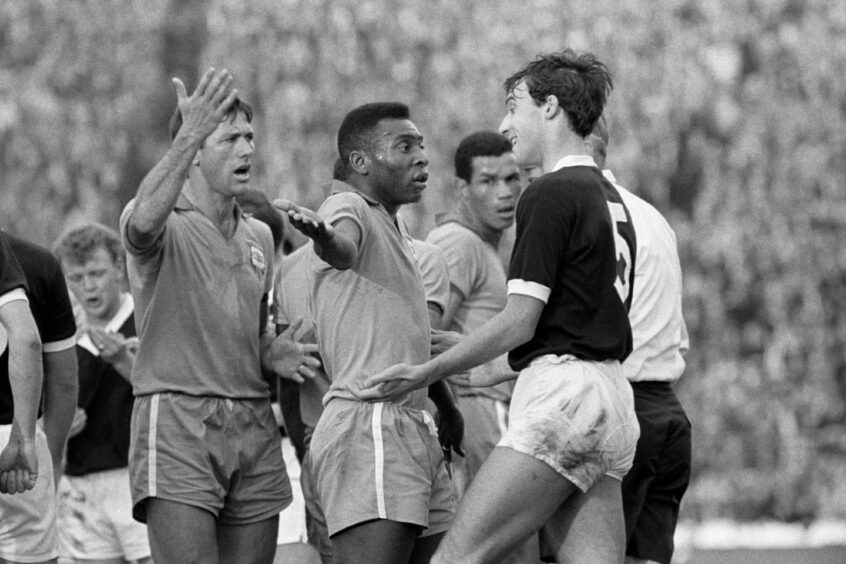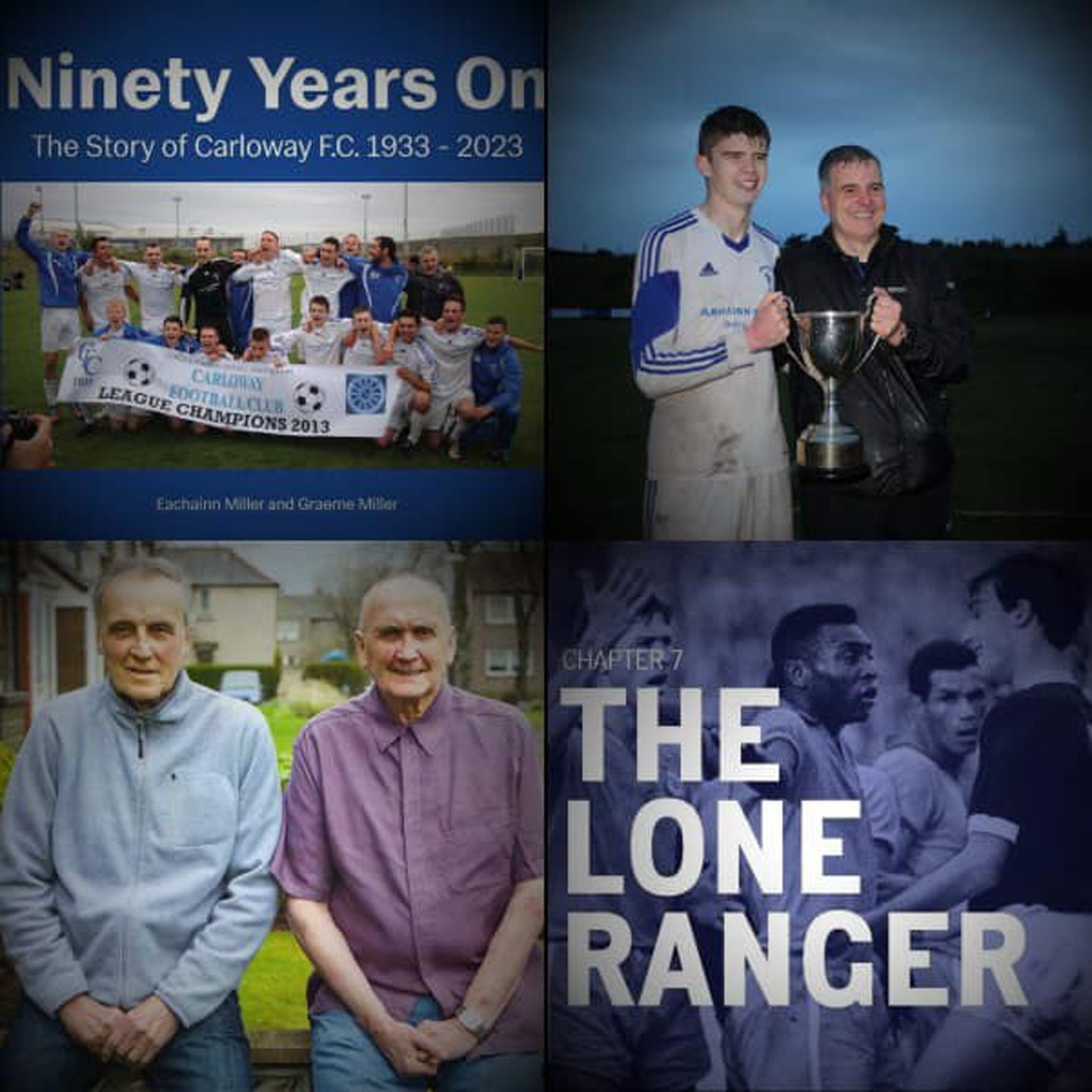
He was known as The Wee Doctor, but his actions had a big influence on the creation of one of Scotland’s most remote, but redoubtable, football outposts.
Indeed, even now, all of 90 years after their foundation, Dr Norman Macphail, whose nickname in Gaelic was ‘An Dotair Beag’, is credited with the introduction of the pursuit in the crofting township of Carloway on the west coast of the Isle of Lewis.
Having worked as a GP in Yorkshire, where he acted as medical adviser to Sheffield United, the little Scot became increasingly interested in the beautiful game and, on several occasions in the 1920s and 30s, donated footballs to Carloway School.
Some of those precious items subsequently entered the public domain and the sport quickly took over from shinty as a local obsession.
And, although there was nothing straightforward about the organisation of Carloway FC – a mission which the authors of a new book declare “was marked by passion, commitment and, occasionally, madness” – they are now the pride of their community.
There was nothing romantic about their early forays into the competitive world of Lewis & Harris action. On the contrary, such was the difficulty in attracting significant playing numbers that years passed before Carloway even tasted their first victory.
And, worse still for those who worked tirelessly at the grassroots, the club was forced to withdraw from the league for more than a decade from the mid-1960s.
The club eventually won the league
But, along with the travails, there have been heartwarming tales, such as how Scotland and Rangers legend Ronnie Mackinnon started and finished his career on Lewis, flinging himself into the task of backing the ‘Way with a whole-hearted passion.
And, finally, at the climax of a tumultuous journey, one evocatively recorded by father-and-son duo Eachainn and Graeme Miller in their new book Ninety Years On, these island warriors won their first-ever championship title in 2013.
Graeme told me: “We moved to the village of Garenin in Carloway on Christmas Eve in 1998 and, over the past 25 years, I have been closely involved with Carloway FC as a player, committee member, youth coach, assistant manager and manager.
“I was lucky enough to coach all my children – Eachainn, Annie and Molly – in the youth teams and then to manage Eachainn when he played for the seniors.
“In 2018, Carloway had just gone through their most successful period since the 1950s and, with the club’s 90th anniversary coming up [in 2023], it seemed like a good time to try and record the club’s history.
Covid brought plenty of setbacks
“Eachainn was completing a journalism degree and I had done some writing for the club website, so we decided to do it together. Five years seemed like plenty of time to get it done, but the pandemic slowed the process down significantly – particularly with Stornoway Library (and copies of old match reports in the Stornoway Gazette) being out of commission and face-to-face interviews having to be cancelled.”
In the end, they completed the job with just a few weeks to spare with the book officially launched by former Labour MP Brian Wilson in December. But all their patience and perseverance has been worth it. This is a volume to treasure, not least given how it tells the story of a community desperate for an identity and a club desperate to provide it.
As Graeme explained: “Carloway is one of the smaller areas of population in Lewis and Harris which is able to support a football team and the club has struggled at various points in our history.
“These include not winning a single competitive game in our pre-war history and not having enough players to enter the Lewis and Harris league [from 1965 to 1977].
It’s a truly heartwarming story
“However, the club has always been defined by a strong sense of community and recognised the importance of celebrating the small victories as well as the big ones.
“The first league title in 2013 was celebrated wildly, but wouldn’t have meant anything without the effort which kept the club going for the previous 80 years.”
Mackinnon’s name looms large in this story and why shouldn’t it, given the player’s immense stature within the sport, his part in Scotland’s unforgettable 3-2 triumph against World Cup winners England at Wembley in 1967, and his involvement with such legends of the game as Brazilian maestro Pele, whose picture crops up in Ninety Years On, as do Gothenburg Greats, Alex McLeish and Mark McGhee.
As Graeme told me: “The club’s link to Ronnie and [his brother] Donnie Mackinnon has always been treasured by the Carloway fans, and Ronnie’s decision to move back to the island cemented this relationship.
He never forgot his roots
“They both turned out for Carloway FC in 1959 while on holiday on their mother’s family croft. Twenty years later and back visiting friends and family, Ronnie helped Carloway out in a local cup semi-final at the age of 38.
“Struggling with long-term injury, Ronnie had plenty of reasons not to turn out, but his old club needed him and he never forgot his roots. This was illustrated again in 2013 when he was in the crowd to see Carloway secure their first league title before presenting the awards at the Player of the Year dance.”
The football world mourned Mackinnon’s death just a few months ago, and his passing was felt particularly hard among his Carloway confreres, but although they paid their respects, larger-than-life characters such as chairman Calum ‘Cobby’ Macleod realise they have to keep encouraging new generations to follow in their footsteps.
The past is important to them, but as Macleod said: “I hope it won’t take another 90 years for the club’s history to be updated!”
Further information about the book can be found at carlowayfc.co.uk





Conversation